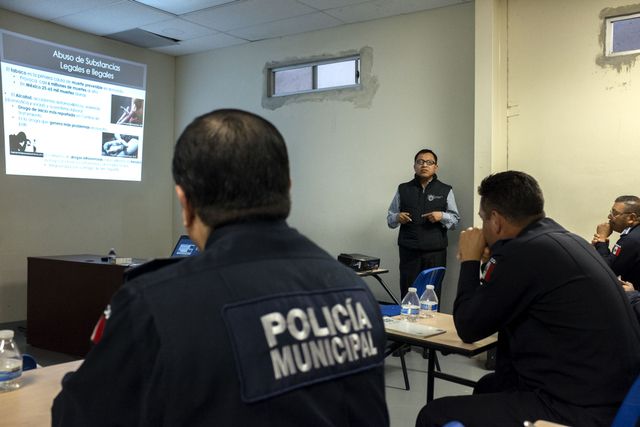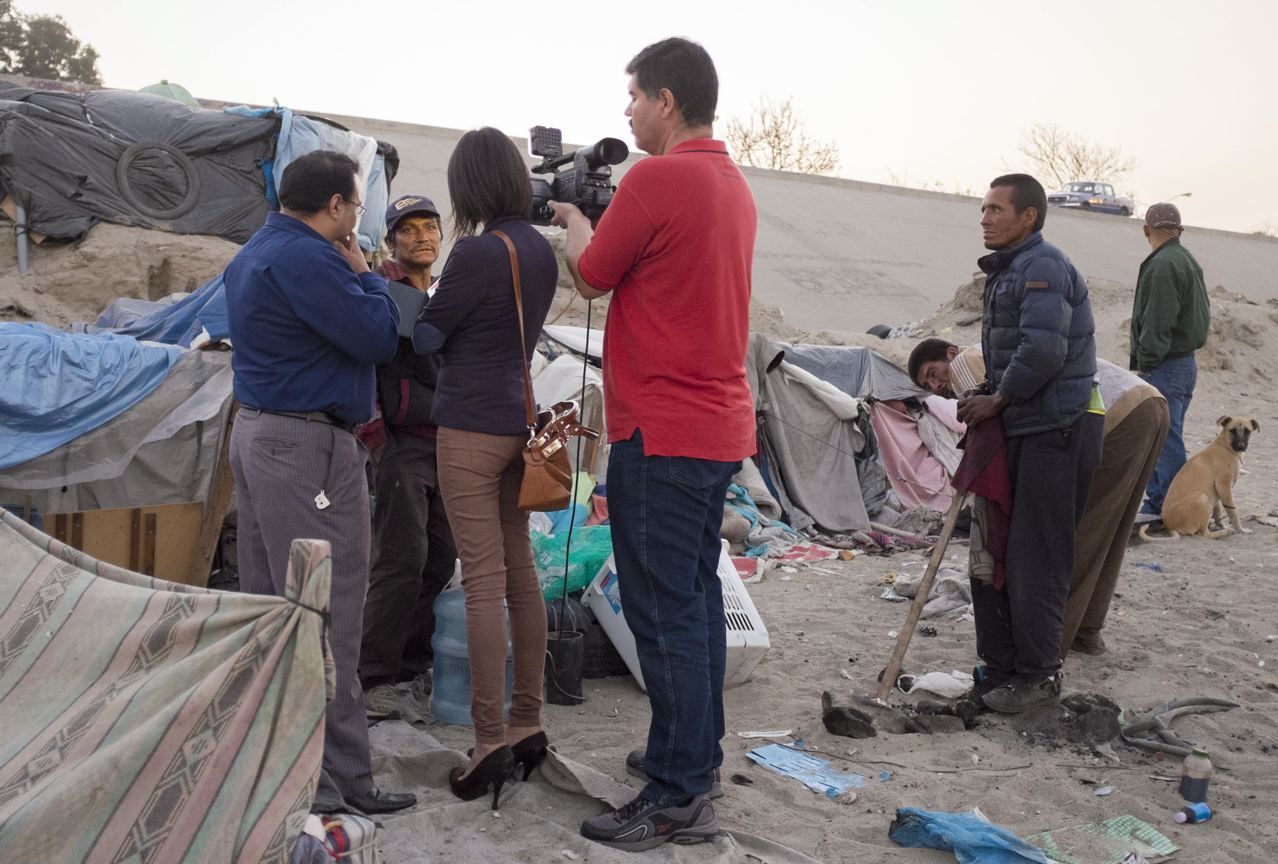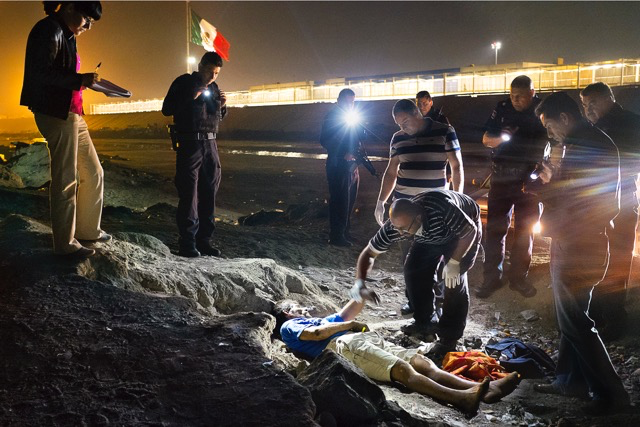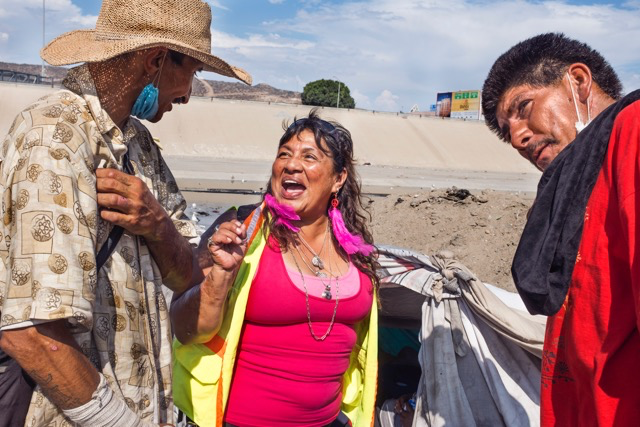In Tijuana police and people who inject drugs have a most complicated relationship.
In 2010, Mexico instituted a law that makes it legal to possess personal amounts of previously illegal drugs, including heroin. Pharmacies can sell syringes to anyone without a prescription. But in reality, the police regularly harass heroin users, confiscating their syringes, shaking them down for bribes, and even arresting them for holding legal quantities of the drugs.
A team of researchers led by epidemiologist Steffanie Strathdee of the University of California at San Diego (UCSD) has shown that these “extra judicial police actions” lead to more syringe sharing, which is one of the best ways to spread HIV. So a graduate student working with Strathdee, Jaime Arredondo, has been holding training sessions with Tijuana police to teach them both how to protect themselves from HIV and how to properly apply the new law.
At a training in December 2014, a few dozen uniformed officers at Tijuana’s Police Academy—the Instituto de Capacitación y Adiestramiento Profesional—sat in a classroom while Arredondo and his team did a three-part seminar that reviewed everything from how HIV is spread to the finer details of the 2010 law. The new law baffled many of the officers who said they would have to travel with scales to see if people holding drugs had exceeded the legal amounts (50 mg heroin, 5 grams marijuana, 500 mg cocaine, .015 mg LSD). Easier to just arrest people.
One of the most important take-home lessons that raised many eyebrows high: Do not stick your hand into the pocket of someone you suspect injects drugs or you may find a needle in your finger. “In the eyes of the police, they’re more afraid of a disease than a bullet,” says Strathdee, who says she heard this from the director of the police academy. Many users know this and, to scare away la placa—the badge—they often wear surgical masks to create the impression that they have tuberculosis.











